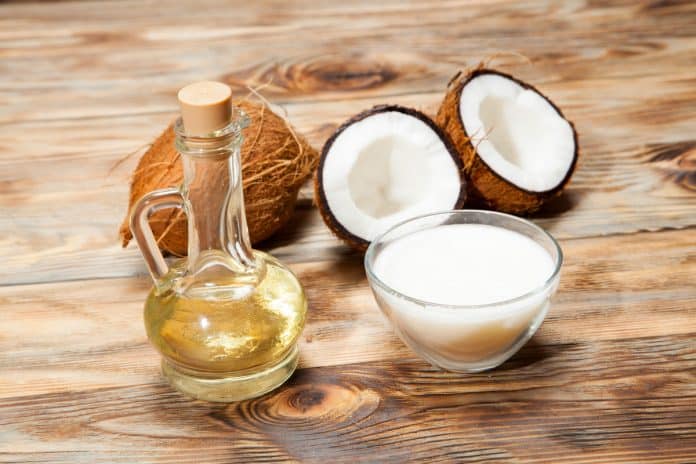Our first encounters with natural oils might appear to be rather difficult. Especially when we realize that there are many oils sharing similar features so we are no longer 100% sure which one to choose in order to treat our hair with it. For example, what’s the difference between palm oil and coconut oil? Let’s find out!

First similarity to point out is that both oils are obtained from palm trees. The second is that their consistency resembles creamy butter. The third thing that connects both oils is the fact that they contain saturated fatty acids in huge quantities. Clearly, natural coconut oil and palm oil are almost alike. Nevertheless, there are many dissimilarities which are worth realizing especially when we want to reach for one of them and use as an alternative to regular cosmetics.
Coconut oil – Characteristics
It’s a very popular ingredient added to body and hair care cosmetics. It’s frequently used to prepare vegetable macerates because of its high chemical stability. Coconut oil is obtained from copra (a.k.a. copperah), which is simply flesh of coconut. The best version of coconut oil is cold-pressed and not exposed to refinement processes. When at room temperature, coconut oil has white, buttery consistency. It melts easily when exposed to slightly higher temperature so, for example, when in contact with skin.
How does coconut oil work?
Owning to its features, coconut oil works way better for treating rather healthy hair which porosity is low. The oil supplies such strands with the adequate number of vitamins and minerals, protects from the sun and prevents excessive water loss. Moreover, it’s suitable to be used as a cosmetic protecting hair ends, and when applied to the scalp, it’s able to relieve irritations and reinforce hair bulbs.
Palm oil – the most important info
Palm oil, in turn, is pressed either from seeds or flesh of the nuts growing on African oil palm, also known as Elaeis guineensis. Of course, this is a completely different plant. Although most frequently it is added to food products, it can be also found in some cosmetics. Moreover, it’s easy to tell it apart from coconut oil because, despite similar consistency, it has more intensive colour. To clarify, palm oil is usually orange.
To sum up, if you would like to use palm oil in everyday care, mind that this is a substance which is responsible for balancing sebum production, mainly. Therefore, it’s more frequently used in body skin cosmetics rather than shampoos or hair conditioners.

